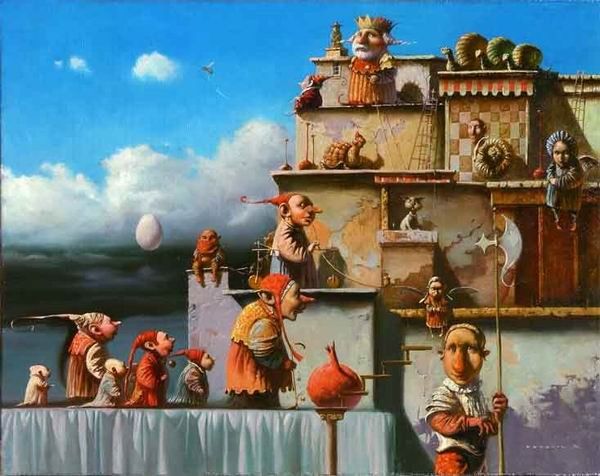
How Threats Make You a Better Player: GM Averbakh Explains, Réti Demonstrates
DEFINITION
Threat, noun : an intention to inflict pain, injury, damage, or do any sort of evil act.
In chess it is typically an intention to capture an enemy piece. But there is also threat of attack, an intention, or just a possibility to attack an enemy piece on the next move. There is no actual direct attack on the enemy piece yet, but it could take place in one move. So we may call threat an indirect, concealed, or hidden attack. If there is a threat of attack two moves away, it is a threat of second order, and so on.
As the entire chess dynamics goes along the following line, threat of attack -> attack -> capture, the awareness of threats makes us much better prepared and leaves us more room to react on what is coming. Simply put, it makes us a better player.
.
THEORY OF PIECE RELATIONSHIPS
Just to remind you, GM Averbakh's theory discusses four elementary contacts between chessmen, 1) attack, 2) restriction, 3) protection and 4) pin. In one of his works he considers threat as an important piece relationship as well. It would be an additional elementary contact.
Threats are not limited to threats of attack only. A possible pawn promotion one move away is also a threat. King threatening to get into the pawn box, too.
Averbakh's Theory of Contacts is very important. We may consider the elementary piece relations as four letters of a chess alphabet. Again, they are (A)ttack, (R)estriction, (P)rotection) and (I)nterposition/pin. Any board position is a network of these connections. We need to learn this alphabet early in our chess education in order to be able to "read board position" for meaning and understanding. In the same way we get the meaning and ideas from the letters and words on a book page.
.
CHESS ALPHABET AS A CODE
We use codes everyday. A code is a rule for converting a piece of information (for example, a letter, word, or gesture) into another form or representation. Languages and writing systems are codes for human thoughts and ideas. Averbakh's chess alphabet (A, P, R, I) is also a code and it helps us form thoughts and ideas and bring in meaning and understanding when we play chess.

art Arthur Gabrielyan
.
Another analogy comes in handy here. From genetics. There are four base types, or letters of the DNA code, A, C, G, and T. This four-letter DNA code contains instructions for making proteins by living cells. Proteins are body workforce, they get everything done. At the same time, they are building blocks for body structure.
What about workforce and structure in chess? Of course, they come from our men that exert force on the board creating a network of interrelations. We may use the chess alphabet (A, R, P, I) to represent and understand position that is actually a structure of interconnected chessmen.
In chess, we actually first decode information on the board to grasp the meaning. Then we encode our ideas about it into a plan for action. We are using the chess alphabet (A, R, P, I) for both processes.
.
Now let's see how all this works in practice.
GM Serper recently posted The Amazing Geometry of Chess. He included the famous K+P vs K+P study composed by GM Richard Reti.
Here's @Gserper "At first sight, it look like White is completely lost in the following position. His king is hopelessly behind the passed h5-pawn, and the white c6-pawn is not going anywhere since Black's king is too close. Yet, White's king accomplishes "mission impossible" by advancing simultaneously toward Black's h5-pawn and his own c6-pawn!"
Here's how the Piece Relations and Threats theory interpret the situation.
First of all, GM Averbakh sees all chess either as double attack, or "combined attack" (attack and restriction acting).
Multiple attack (of which double attack is one form) is any combination of direct attack(s) and threat(s), including threat of attack, threat of attack of second order, threat of pawn promotion, etc.
Back to Reti. After 1...Kg7 there is a double attack consisting of two threats of second order. White's King threatens to get into the h-pawn's box in two moves. On the other hand it threatens to get to the rescue of the c-pawn and support its promotion by reaching the e6, or e7-square.
After the h-pawn slowed down a little and Black played 2...Kb6, follows 3.Ke5 with a double attack consisting of two threats (of first order), a) to get in the h-pawn box, and b) to support the c-pawn by reaching the d6 square.
Likewise, in the 1...Kb6 2.Kf6 h4 3.Ke5 line, we see again a double threat of first order of the same kind.
.
Beware of threats! And use them wisely yourself.
.
.

